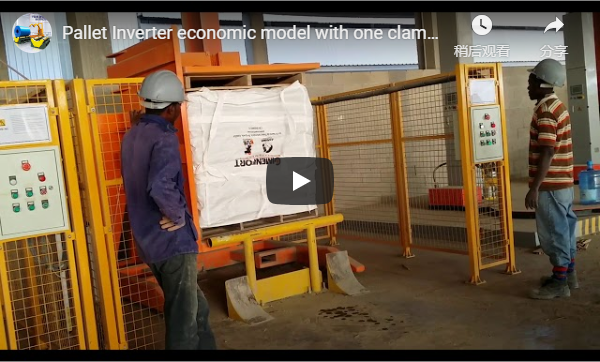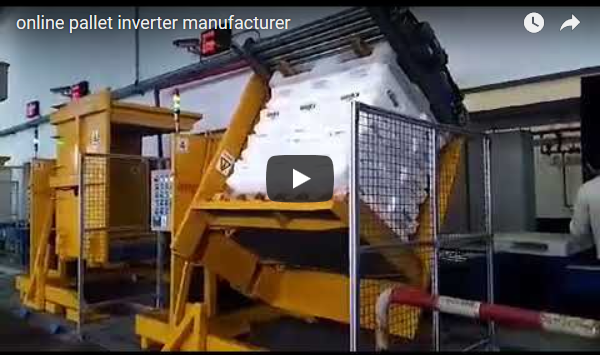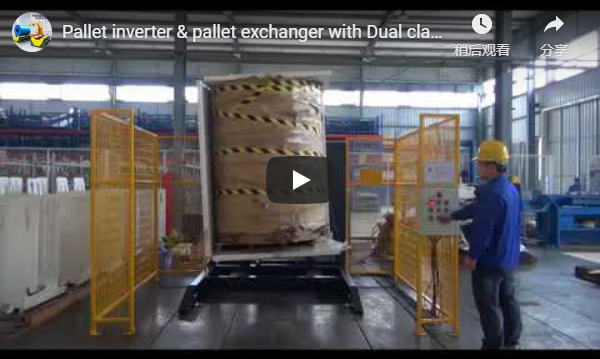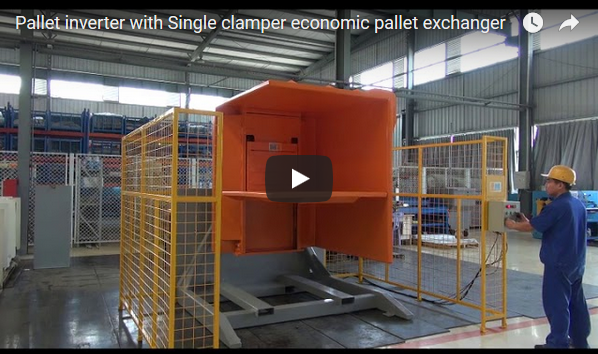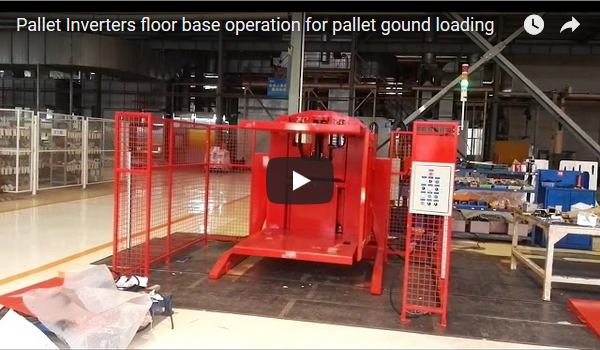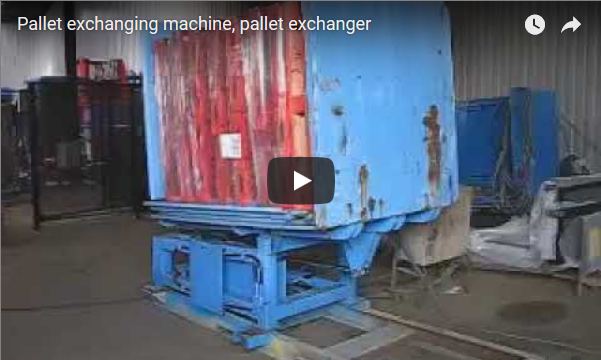In modern warehousing and distribution centers, efficiency, safety, and compliance are paramount. Handling palletized goods often requires transferring loads between different pallet types – such as switching from wooden pallets to hygienic plastic pallets, or replacing damaged units. The 180-degree tilting pallet changer, also known as a pallet inverter, offers a robust and automated solution for these critical tasks. This article delves into the operation, technical specifications, benefits, and applications of this essential piece of material handling equipment, as demonstrated in the video above.
1. The Necessity of Pallet Exchange in Distribution
Several scenarios necessitate transferring goods from one pallet to another:
- Shipping Requirements: Exporting goods often requires specific pallet types (e.g., heat-treated wood, plastic).
- Internal Standards: Many facilities, particularly in food, beverage, and pharmaceutical industries, mandate the use of captive plastic or aluminum pallets for hygiene control within production or cleanroom areas.
- Damaged Pallets: Replacing broken or unstable pallets prevents product damage and ensures safe handling and storage.
- Load Handling: Transferring goods to slip sheets or specialized handling platforms.
Manual pallet changing is time-consuming, labor-intensive, and poses significant risks of worker injury and product damage. Automated pallet changers streamline this process dramatically.
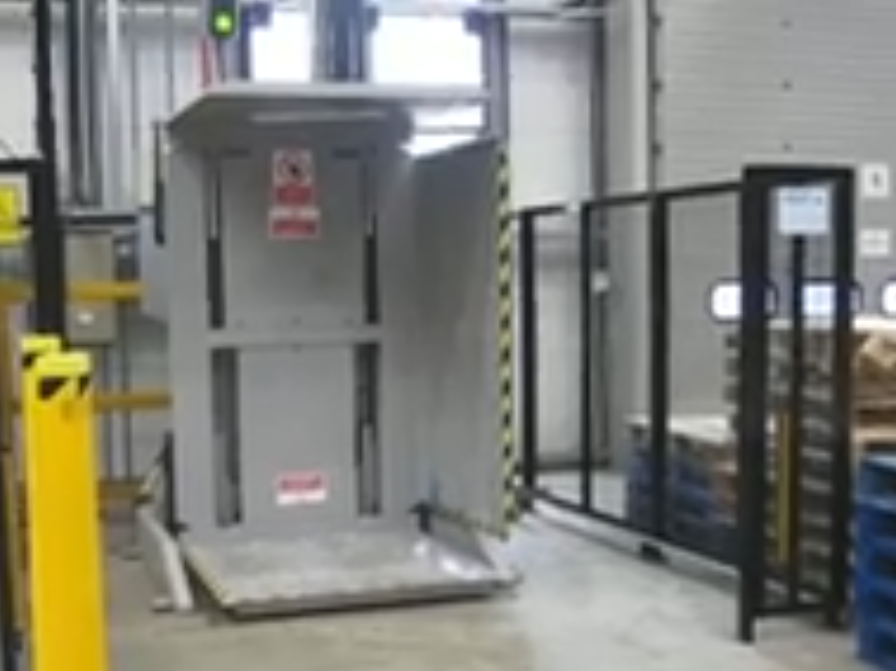
2. Understanding the 180-Degree Tilting Pallet Changer
The machine showcased utilizes a 180-degree tilting mechanism. This design gently clamps the load, rotates it upside down, allows for the original pallet to be removed from the top (now the bottom), places the new pallet, and then rotates the load back to its upright position on the new pallet. This method is particularly suitable for stable, well-packaged goods.
3. Operational Workflow: A Step-by-Step Analysis
The video illustrates the typical operational cycle:
- 3.1 Load Placement: The process begins with a forklift operator carefully positioning the fully loaded pallet into the machine's loading bay. Precision is key to ensure the load is centered correctly for secure clamping.
- 3.2 Clamping and Inversion: Once the load is in place, the machine's hydraulic or electric clamping system engages, securing the load from the sides and often the top. The entire clamped unit then rotates 180 degrees around a central axis. This inversion is controlled and smooth to prevent load shifting.
- 3.3 Pallet Exchange: With the load inverted, the original pallet (now accessible at the top) can be easily removed by the forklift or manually. The new target pallet is then positioned onto the exposed base of the load.
- 3.4 Load Return: The machine reverses the rotation, bringing the load back 180 degrees to its original upright orientation, now resting securely on the new pallet.
- 3.5 Unloading: Finally, the clamps release, and the forklift operator can safely remove the repalletized load, completing the cycle.
4. Key Technical Specifications & Design Elements
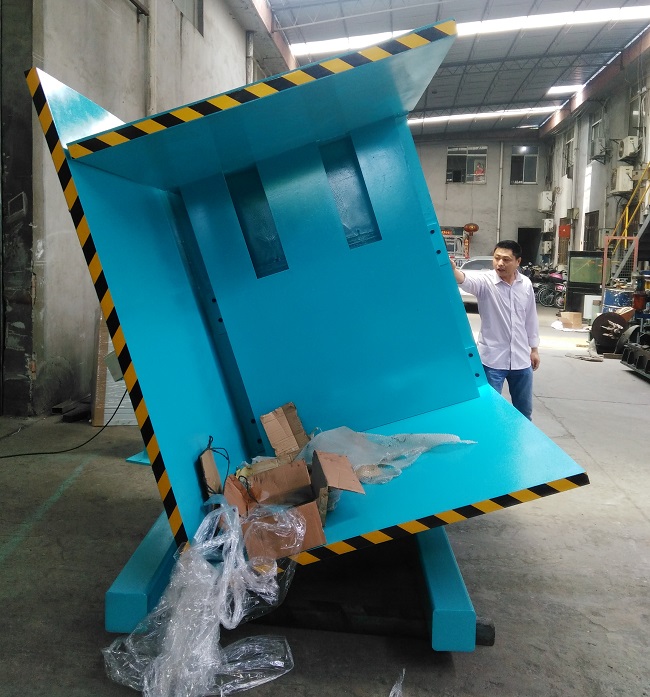
While specifications vary by manufacturer and model, typical parameters for a 180-degree tilting pallet changer include:
| Feature | Typical Specification Range | Importance |
|---|---|---|
| Load Capacity | 1000 kg - 2500 kg (2200 - 5500 lbs) | Must match maximum expected load weight. |
| Cycle Time | 45 - 90 seconds | Directly impacts throughput and efficiency. |
| Pallet Size Comp. | Standard GMA, CHEP, EURO, Custom | Needs to accommodate facility's pallet types. |
| Max Load Height | 1200 mm - 2400 mm (47" - 94") | Determines suitability for different load sizes. |
| Power System | 3-Phase Electric / Hydraulic | Influences energy consumption and maintenance. |
| Control System | PLC Automated / Manual Push-button | Affects ease of use, integration, diagnostics. |
| Construction | Heavy-duty steel frame | Ensures durability and longevity. |
| Safety Features | Perimeter guarding, light curtains, E-stops | Critical for operator safety and compliance. |
| Footprint | Varies (e.g., 2.5m x 2.0m) | Space requirement within the facility layout. |
5. Core Components Breakdown
Understanding the main parts aids in appreciating the machine's function and maintenance needs:
- Base Frame: Provides structural integrity and supports all other components.
- Tilting Mechanism: Usually powered by hydraulic cylinders or electric motors coupled with robust bearings and framework to handle the load during rotation.
- Clamping System: Side and potentially top pressure plates, hydraulically or electrically actuated, designed to securely hold diverse loads without causing damage.
- Control Panel: Houses the Human-Machine Interface (HMI), PLC (Programmable Logic Controller), and operational controls (start, stop, emergency stop).
- Power Unit: Contains the electric motor and hydraulic pump (for hydraulic models) or electrical drives.
- Safety Guarding: Physical barriers, safety interlocks, and often light curtains prevent access during operation, complying with industry safety standards.
6. Benefits for Industrial Distribution Operations
Integrating a pallet changer like the one shown offers significant advantages:
- Increased Throughput: Automating the exchange process is significantly faster than manual methods.
- Enhanced Worker Safety: Eliminates manual lifting and restacking, reducing risks of musculoskeletal injuries.
- Reduced Product Damage: Gentle, controlled handling minimizes the chance of goods being dropped or crushed.
- Improved Hygiene Control: Facilitates easy switching to clean pallets required in sensitive environments.
- Compliance Assurance: Ensures loads are on the correct pallet type for shipping or internal processes.
- Labor Optimization: Frees up personnel previously assigned to manual pallet swapping for more value-added tasks.
7. Common Applications and Industries
180-degree tilting pallet changers are widely used across various sectors:
- Food and Beverage: Switching to plastic pallets for hygienic production areas.
- Pharmaceuticals: Ensuring cleanroom compliance and preventing contamination.
- Chemical Manufacturing: Handling bagged goods or drums safely.
- Printing and Paper: Managing large rolls or stacks of paper.
- General Warehousing: Replacing damaged pallets, transferring loads to outbound pallets.
- Logistics Providers (3PLs): Meeting diverse client requirements for pallet types.
8. User Experience Considerations
From an operator's perspective:
- Ease of Use: Modern pallet changers often feature intuitive controls, sometimes with pre-programmed cycles for different load types. Minimal training is typically required for basic operation.
- Maintenance: Like any industrial machinery, regular maintenance is crucial. This includes checking hydraulic fluid levels and connections (if applicable), lubricating moving parts, inspecting clamps, and verifying safety sensor functionality. Access panels are usually designed for straightforward servicing.
- Integration: These machines can operate as standalone units or be integrated into automated conveyor lines for seamless material flow. PLC controls allow for communication with warehouse management systems (WMS).
9. Selecting the Right Pallet Changing Solution
Choosing the appropriate pallet changer depends on:
- Load Characteristics: Weight, height, stability, and fragility of the typical product.
- Required Throughput: How many pallets need to be exchanged per hour or shift?
- Pallet Types: The range of incoming and outgoing pallet sizes and designs.
- Available Space: The physical footprint the machine will occupy.
- Budget: Initial investment cost versus long-term ROI from efficiency and safety gains.
- Automation Level: Standalone operation versus fully integrated system.
Other types of pallet changers exist, such as push-pull systems or clamp-and-lift designs, which may be more suitable for specific load types (e.g., very fragile items). Comparing different technologies is vital. Explore [related material handling solutions] for broader context.
Conclusion
The 180-degree tilting pallet changer is a powerful tool for optimizing logistics and distribution processes. By automating the often necessary task of pallet exchange, it delivers substantial improvements in speed, safety, and operational efficiency, contributing directly to a more productive and compliant supply chain. Understanding its mechanics, specifications, and benefits allows businesses to make informed decisions about implementing this valuable technology.
For further information or specific inquiries about pallet changing solutions:
info@fhopepack.com

